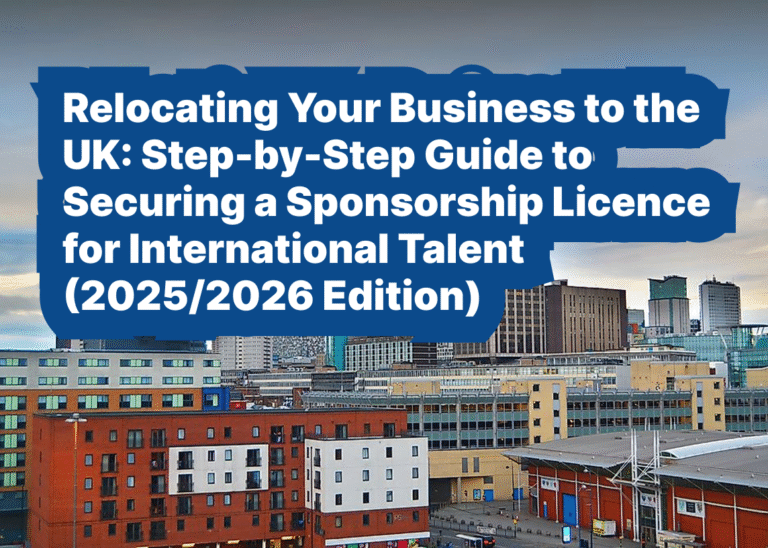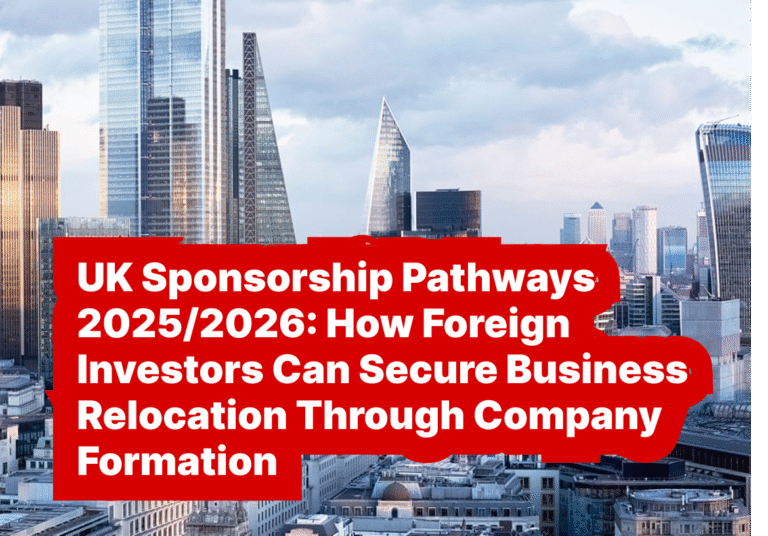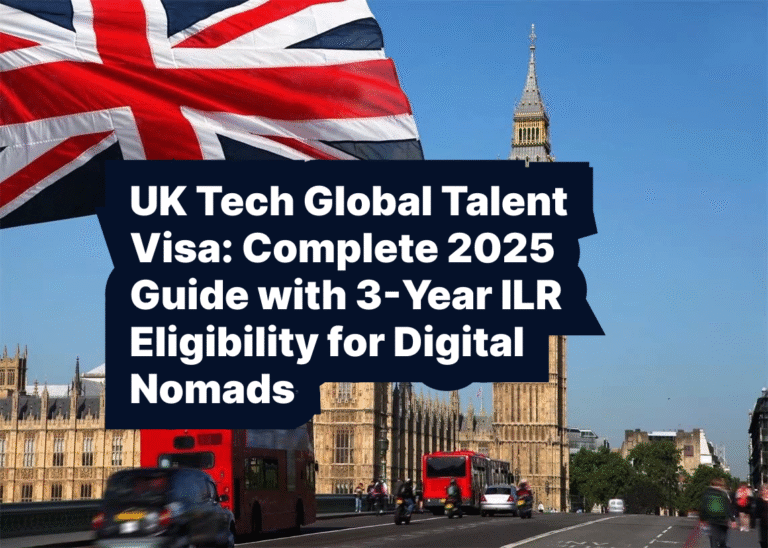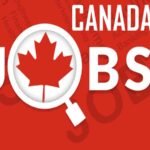Finding employers willing to sponsor your visa can make the difference between landing your dream job in America and remaining stuck in an endless job search loop. With over 61,000 visa sponsorship jobs currently available in the United States, the opportunities are abundant, but knowing where to look and how to identify legitimate sponsorship-authorized companies is crucial for your success.
Understanding the landscape of visa sponsorship requires more than simply browsing job boards. It demands strategic research, utilizing government databases, leveraging professional networks, and identifying companies with established track records of successful visa sponsorships. This comprehensive guide will equip you with the tools, resources, and strategies needed to locate companies that not only have the legal authority to sponsor visas but also actively do so for qualified international candidates.
Understanding Visa Sponsorship Authorization
Before diving into search strategies, it’s essential to understand what visa sponsorship authorization means and how companies obtain the legal ability to sponsor foreign workers. Contrary to popular belief, companies don’t need a specific “license” to sponsor visas, but they must meet certain requirements and complete specific processes for each visa category.
For H-1B visas, the most common employment-based visa category, employers must first file a Labor Condition Application (LCA) with the Department of Labor before petitioning USCIS. This process demonstrates that the employer will pay prevailing wages and maintain working conditions that won’t adversely affect similarly employed US workers. The LCA filing creates a public record that becomes invaluable for job seekers researching potential sponsors.
Different visa categories have varying requirements. L-1 visas for intracompany transfers require the employer to have qualifying relationships with foreign entities. O-1 visas for individuals with extraordinary ability don’t require labor certification but demand extensive documentation of achievements. Employment-based green card sponsorship often requires PERM labor certification, demonstrating that no qualified US workers are available for the position.
Understanding these requirements helps you identify which companies are likely candidates for sponsorship and tailor your approach accordingly. Large multinational corporations often have established immigration departments and policies, while smaller companies may sponsor visas on a case-by-case basis for exceptional candidates.
Official Government Databases and Resources
The most reliable starting point for your research is official government databases that provide transparency into visa sponsorship activities. The H-1B Employer Data Hub maintained by USCIS and official disclosure data from the US Department of Labor offer comprehensive information about companies’ sponsorship histories.
Department of Labor’s Foreign Labor Certification Data
The Department of Labor maintains extensive databases of Labor Condition Applications and PERM applications that are goldmines for job seekers. These databases show which companies have filed applications, for what positions, at what salary levels, and in which locations. The data includes approval rates, processing times, and trends over multiple years.
Access these databases through the Department of Labor’s Office of Foreign Labor Certification website, where you can search by employer name, job title, location, or wage level. The data reveals not only which companies sponsor visas but also their sponsorship patterns, preferred job categories, and geographic concentration of sponsored positions.
USCIS H-1B Employer Data Hub
USCIS provides annual reports and data analysis tools showing H-1B petition statistics by employer, including approval rates, job categories, and geographic distribution. This information helps you identify companies with successful track records and understand their sponsorship preferences.
The data hub reveals important trends, such as which companies consistently file large numbers of H-1B petitions, their success rates, and whether they primarily sponsor new employees or extend existing workers’ status. Companies with high approval rates and consistent filing patterns are generally more experienced and reliable sponsors.
myVisaJobs.com Database
MyVisaJobs provides a searchable database of top employers sponsoring H-1B visas and Green Cards, including company visa sponsorship history, job openings, and application trends. This platform aggregates government data into user-friendly formats, allowing you to search by company name, location, job title, or salary range.
The platform provides detailed company profiles showing historical sponsorship data, recent job postings mentioning visa sponsorship, and trends over time. You can identify companies that are increasing their sponsorship activities or those that consistently sponsor workers in your field.
Industry-Specific Research Strategies
Different industries have varying approaches to visa sponsorship, and understanding these patterns can significantly improve your search efficiency. Technology companies, for example, have historically been the largest sponsors of H-1B visas, accounting for a significant percentage of annual petitions.
Technology Sector Analysis
Major technology companies actively sponsor H-1B visas, providing job opportunities for foreign workers and fostering diversity and inclusion in the workplace. Research shows that companies like Microsoft, Google, Amazon, Apple, and Facebook consistently rank among the top H-1B sponsors annually.
However, don’t limit your search to household names. Mid-tier technology companies, startups with rapid growth, and specialized software firms often offer better sponsorship opportunities due to less competition and urgent hiring needs. Research emerging technology sectors such as artificial intelligence, cybersecurity, fintech, and healthtech, where companies frequently struggle to find qualified domestic talent.
Healthcare and Life Sciences
Healthcare organizations, particularly hospitals, research institutions, and pharmaceutical companies, regularly sponsor visas for physicians, researchers, and specialized healthcare professionals. Academic medical centers often have established pathways for international medical graduates, while pharmaceutical companies sponsor research scientists and clinical professionals.
Research teaching hospitals affiliated with medical schools, as they often have more experience with visa processes for international medical graduates and researchers. Pharmaceutical companies with research and development facilities regularly sponsor scientists and engineers for both temporary visas and permanent residency.
Financial Services and Consulting
Investment banks, consulting firms, and financial services companies frequently sponsor visas for analysts, consultants, and specialized professionals. These companies often recruit from top international universities and have established pipelines for visa sponsorship.
Major consulting firms like McKinsey, BCG, and Bain actively recruit international talent, while investment banks sponsor analysts and associates for both summer internships and full-time positions. Research boutique consulting firms and specialized financial services companies that may offer faster paths to sponsorship due to niche expertise requirements.
Utilizing Professional Networks and Platforms
Professional networking plays a crucial role in identifying visa sponsorship opportunities that may not be publicly advertised. Many companies prefer to sponsor candidates they’ve identified through referrals or professional relationships rather than open job postings.
LinkedIn Strategic Networking
LinkedIn offers powerful tools for identifying potential sponsors and connecting with decision-makers. Use platforms like LinkedIn to connect with recruiters at H1B-friendly companies and build relationships within your target industries.
Search for employees at companies known for visa sponsorship and analyze their backgrounds to understand recruitment patterns. Look for international employees who have successfully obtained visas, as they can provide insights into company processes and potential opportunities. Join industry-specific groups where professionals discuss visa sponsorship experiences and share job leads.
Use LinkedIn’s advanced search features to identify recruiters and hiring managers at target companies. Many recruiters actively seek international candidates and can provide guidance on companies’ sponsorship policies and current hiring needs. Build authentic relationships by engaging with their content and sharing relevant professional insights.
Professional Association Membership
Industry-specific professional associations often provide networking opportunities and job boards featuring positions open to visa sponsorship candidates. Organizations like the Institute of Electrical and Electronics Engineers (IEEE), American Medical Association (AMA), and various engineering societies maintain career centers with employer directories and job listings.
Attend association conferences, webinars, and local chapter meetings where you can network with professionals and learn about upcoming opportunities. Many associations offer mentorship programs that can connect you with established professionals who understand the visa sponsorship process.
University and Academic Connections
Universities and academic institutions serve as valuable bridges between international talent and potential employers. Career services departments at major universities often maintain relationships with employers known for sponsoring visas and can provide introductions and recommendations.
Career Services and Alumni Networks
Contact career services departments at universities in your target cities or those with strong programs in your field. Many universities offer career services to alumni indefinitely and maintain databases of employers willing to sponsor visas. Career counselors can provide insights into local hiring trends and company preferences.
Alumni networks can be particularly valuable for identifying opportunities and gaining insider perspectives on company cultures and sponsorship processes. Reach out to alumni working at companies you’re researching to learn about their experiences and potential opportunities.
Research Institution Partnerships
Universities often have partnerships with private companies for research collaboration, creating pathways for international researchers and graduate students to transition to industry positions. Research the corporate partnerships of universities in your field to identify potential employers.
Many companies recruit directly from university programs, particularly for specialized roles requiring advanced degrees. Build relationships with faculty members who have industry connections and can provide recommendations or introductions to potential employers.
Online Job Platforms and Specialized Resources
While general job boards may not always indicate visa sponsorship availability, specialized platforms and strategic searching can uncover opportunities. Several platforms specifically focus on connecting international job seekers with companies offering American work visa sponsorship.
Specialized Visa Sponsorship Job Boards
Platforms like USponsorMe, H1BGrader, and specialized sections of major job boards focus specifically on positions offering visa sponsorship. These platforms aggregate opportunities and provide additional context about employers’ sponsorship histories and requirements.
Research shows that over 1.4 million current job vacancies include visa sponsorship opportunities, but finding them requires knowing where to look and how to search effectively. Use specific keywords like “visa sponsorship,” “H-1B,” “will sponsor,” and “open to international candidates” in your searches.
Company Career Pages Direct Research
Visit company career pages and check for positions that mention visa sponsorship, and look at LinkedIn and Glassdoor for reviews from current and former employees to understand how supportive the company is of international workers.
Many companies include information about their visa sponsorship policies in job descriptions or company information sections. Look for phrases indicating openness to international candidates, such as “equal opportunity employer,” “diverse workforce,” or explicit mentions of visa sponsorship availability.
Analyzing Company Sponsorship Patterns
Understanding companies’ historical sponsorship patterns helps you prioritize your job search efforts and tailor your applications effectively. Employers file LCA (Labor Condition Application) forms with the DOL (Department of Labor) as a first step in the H-1B process, creating searchable records of their sponsorship activities.
Sponsorship Volume and Consistency
Companies that consistently sponsor large numbers of visas typically have established processes and are more likely to sponsor additional candidates. Research annual sponsorship volumes to identify companies with robust international hiring programs versus those that sponsor occasionally.
Look for trends in companies’ sponsorship activities. Growing companies or those expanding into new markets often increase their international hiring. Conversely, companies reducing their sponsorship volumes may be less likely to sponsor new candidates.
Success Rates and Approval Patterns
Official databases provide information about companies’ approval rates and salary ranges for sponsored positions, helping you assess the likelihood of successful sponsorship. Companies with high approval rates typically have experienced legal teams and well-documented processes.
Analyze salary patterns to understand companies’ compensation approaches for sponsored employees. Some companies pay premium salaries to sponsored workers, while others offer competitive but standard market rates. This information helps you negotiate effectively and set appropriate expectations.
Geographic Considerations
Location plays a crucial role in visa sponsorship opportunities, with certain metropolitan areas offering significantly more options than others. Major technology hubs like San Francisco, Seattle, and Austin typically have the highest concentrations of sponsoring employers.
Metropolitan Area Analysis
Research metropolitan areas with high concentrations of companies in your industry. Cities like New York, Los Angeles, Chicago, Boston, and Washington D.C. offer diverse opportunities across multiple sectors. Smaller cities with major corporate headquarters or research facilities may offer less competition for sponsored positions.
Consider the cost of living and quality of life factors when evaluating locations. Some cities may offer lower salaries but significantly reduced living costs, effectively providing better overall compensation packages.
Regional Industry Clusters
Identify regional industry clusters where companies frequently compete for similar talent, creating favorable conditions for visa sponsorship. For example, biotechnology companies cluster in areas like Boston, San Francisco, and Research Triangle Park in North Carolina.
Financial services companies concentrate in New York, Chicago, and certain suburban areas, while aerospace and defense contractors cluster near major military installations and manufacturing centers. Research these regional patterns to focus your search efforts effectively.
Building Your Target Company List
Create a systematic approach to building and maintaining your target company list. Start with broad industry research and gradually narrow your focus based on company size, location, sponsorship history, and cultural fit.
Prioritization Criteria
Develop criteria for prioritizing companies based on factors such as:
- Historical sponsorship volume and success rates
- Company growth trajectory and hiring trends
- Industry position and competitive advantages
- Geographic location and cost of living
- Company culture and work environment
- Career advancement opportunities and professional development
Research Documentation
Maintain detailed records of your research, including contact information, application deadlines, specific job requirements, and notes about company culture and values. This documentation helps you tailor applications effectively and follow up appropriately.
Track companies’ hiring cycles and typical recruitment timelines. Many companies have predictable patterns for international hiring, often aligned with H-1B filing deadlines or academic calendars.
Application Strategy and Timing
Understanding the timing of visa applications and company recruitment cycles significantly impacts your success rate. H-1B petitions, for example, must be filed by April 1 for October start dates, creating specific windows for recruitment and hiring decisions.
H-1B Timeline Considerations
Companies typically begin recruiting for H-1B positions in late fall or early winter to allow time for the petition filing process. Plan your job search timeline accordingly, starting your search at least six months before desired start dates.
Some companies maintain pools of qualified international candidates and reach out when positions become available. Building relationships with recruiters and hiring managers throughout the year can position you for opportunities as they arise.
Alternative Visa Pathways
Research companies that utilize alternative visa categories beyond H-1B, such as L-1 for multinational transfers, O-1 for extraordinary ability, or TN visas for Canadian and Mexican professionals. These pathways may offer fewer restrictions and different timing requirements.
Some companies prefer candidates already in the United States on student visas (F-1) with Optional Practical Training (OPT) authorization, as this provides immediate work authorization while pursuing longer-term sponsorship options.
Leveraging Technology and Automation
Use technology tools to streamline your research and monitor opportunities continuously. Set up automated searches and alerts to stay informed about new opportunities and company developments.
Search Automation and Alerts
Create Google Alerts for company names combined with terms like “hiring,” “visa sponsorship,” or “international candidates.” Set up job board alerts for positions in your field that mention sponsorship availability.
Use LinkedIn’s job alert features to monitor postings from target companies and receive notifications about relevant opportunities. Many platforms allow you to save searches and receive regular updates about new matching positions.
Data Analysis Tools
Utilize spreadsheet software or customer relationship management (CRM) tools to track your research, application progress, and follow-up activities. Create databases of contact information, application deadlines, and company-specific notes.
Some professionals use web scraping tools to automatically collect job postings and company information, though ensure you comply with websites’ terms of service and robots.txt files when using such tools.
Understanding Legal and Compliance Aspects
Companies must navigate complex legal requirements when sponsoring visas, and understanding these constraints helps you identify the most viable opportunities and position yourself as an attractive candidate.
Employer Compliance Requirements
Companies sponsoring visas must demonstrate good faith recruitment efforts, pay prevailing wages, and maintain extensive documentation. Understanding these requirements helps you appreciate the investment companies make in sponsored employees and position yourself as worth that investment.
Research companies’ compliance histories and any legal issues related to visa sponsorship. Companies with clean compliance records are generally safer bets for successful sponsorship, while those with violations may face additional scrutiny or restrictions.
Industry-Specific Regulations
Certain industries have additional regulations affecting visa sponsorship. Defense contractors may require security clearances that limit international hiring, while healthcare organizations must navigate professional licensing requirements for international professionals.
Financial services companies may face additional scrutiny due to regulatory oversight, while technology companies dealing with sensitive data may have restrictions on international employees’ access to certain projects.
Building Long-Term Relationships
Successful visa sponsorship often results from long-term relationship building rather than transactional job applications. Invest time in developing authentic professional relationships that can lead to sponsorship opportunities.
Mentorship and Professional Development
Seek mentors within your industry who understand the visa sponsorship process and can provide guidance on navigating company cultures and application strategies. Many successful international professionals are willing to share their experiences and provide advice.
Participate in professional development opportunities such as certifications, conferences, and continuing education that demonstrate your commitment to your field and help you network with potential sponsors.
Contributing Value Before Seeking Employment
Consider ways to contribute value to target companies before seeking employment, such as participating in open-source projects, contributing to industry publications, or speaking at conferences. These activities demonstrate expertise and can lead to recruitment opportunities.
Volunteer for professional organizations or industry initiatives where you can work alongside professionals from target companies, building relationships and demonstrating your capabilities in professional settings.
Your journey to finding companies with visa sponsorship capabilities requires patience, strategic thinking, and systematic research. The landscape of opportunities is vast and constantly evolving, with new companies entering the international hiring market regularly while others refine their approaches based on business needs and regulatory changes.
Success in this process depends not only on identifying potential sponsors but also on positioning yourself as an exceptional candidate worth the investment in sponsorship. Companies sponsor international workers because they bring unique value, whether through specialized skills, diverse perspectives, or exceptional performance capabilities.
Remember that visa sponsorship represents the beginning of a long-term professional relationship. Companies invest significant time, money, and resources in sponsored employees, and they expect that investment to pay dividends through outstanding performance and long-term commitment. Approach the process with professionalism, persistence, and gratitude for the opportunities available.
The American job market offers unprecedented opportunities for international professionals who approach the visa sponsorship process strategically. With thorough research, strategic networking, and persistent effort, you can identify companies not only willing but eager to sponsor your visa and launch your American career journey. The key lies in understanding the landscape, leveraging available resources, and building authentic professional relationships that lead to mutual success for both you and your future employer.







